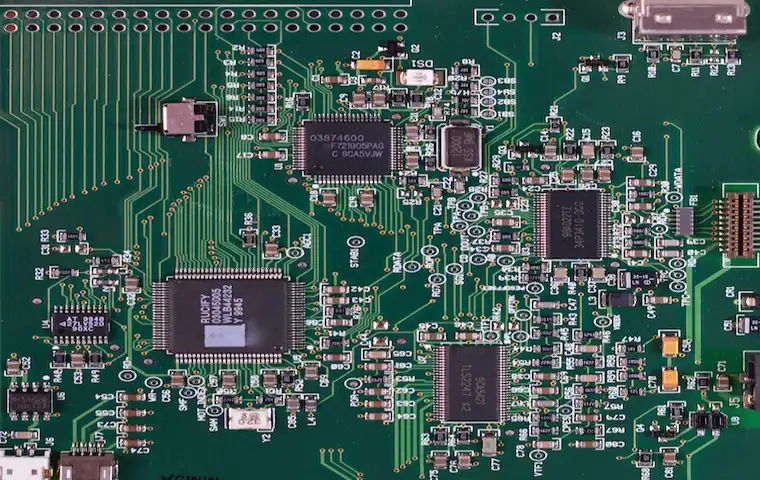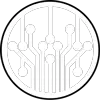Have you ever wondered about the idea behind embedded systems? We have seen an explosion of interest in embedded systems development in the last few years.
We are going to discuss the fundamental ideas behind embedded systems here.
Knowing that it depends on our computer’s hardware and software is helpful.
Different structures and services found in an embedded system can be used to control processors.
That relates to managing our program’s electrical aspects; reading this article lets you learn how embedded systems development is done.
We hope this clarifies any queries you may have in this area.
An embedded control system is made up of a variety of components. The software is crucial because it allows the system to work correctly.
Although the software may be created to carry out several functions, it is typically in charge of regulating the information flow between the system’s many parts.
The other important element of an embedded control system is the hardware.
The hardware gives the system its physical form and allows it to interact with its environment.
The hardware’s design can significantly impact the system’s performance, so it’s essential to choose wisely when selecting components.
Software and hardware make up an embedded control system used in various applications.
These applications range from simple tasks like turning on or off the light to more complex processes like driving a car.

A brief definition of embedded control system
An embedded control system is made up of a variety of components. The software is crucial because it allows the system to work correctly.
Although the software may be created to carry out several functions, it typically regulates the information flow between the system’s many parts and several embedded systems programming languages.
The other important element of an embedded control system is the hardware.
The hardware gives the system its physical form and allows it to interact with its environment.
The hardware’s design can significantly impact the system’s performance, so it’s essential to choose wisely when selecting components.
Software and hardware make up an embedded control system used in various applications.
These applications range from simple tasks like turning on or off the light to more complex processes like driving a car.
Now, what is an embedded system?
An embedded system is a technology that combines hardware and software to carry out a particular function.
Typically, it can be found in everyday items like cars, washing machines, and cell phones.
The software in an embedded system is generally written in C or C++. It is designed to run on a real-time operating system (RTOS), which means it can respond to events as they happen without any delays.
The hardware in an embedded system can be anything from a simple microcontroller to a complex system-on-a-chip (SoC).
It is often custom-designed for the specific application it will use. Embedded systems are used in various applications, from consumer electronics to industrial control systems.
It’s time to discuss the background of an embedded system: DR. Stark created this mechanism for the Apollo program in the 1960s.
The main goal was to reduce the size and weight of the Apollo Guidance Computer.
This system is potent and fast, capable of fixing any system. Embedded systems are known for their compact size, making them suitable for various devices.
Embedded systems find applications in various domains, from simple electronic devices like calculators and watches to complex systems like aircraft engines and spacecraft.
Their versatility allows them to seamlessly integrate into different devices, providing efficient and reliable performance.
With their powerful capabilities, embedded systems play a crucial role in enabling the functionality of diverse technological solutions.
Embedded system as simple as drinking water
So, you may wonder what embedded technology is and ask yourself what an embedded operating system is.
An embedded system, in general, is a piece of technology with a microprocessor.
It combines computer memory, processors, and input/output devices. The purpose of an embedded system is to carry out a specified purpose or task.
Similar to custom-made software, embedded and custom-made software aims to develop specialized systems.
They are designed to meet specific requirements and perform dedicated functions.
Embedded systems are frequently employed when it’s important to manage or keep an eye on a machine or process.
For example, an automobile engine control system is an embedded system that monitors and controls the engine’s operation.
Similarly, a spacecraft guidance system is an embedded system that calculates the correct course for the spacecraft and then maintains its flight accordingly.
As embedded systems become more sophisticated, they are increasingly used for complex tasks.
For example, some newer embedded systems, such as Linux or Android, can run entire operating systems.
This allows them to perform complex tasks such as playing video or audio files, displaying images, or accessing the Internet.
You may recall that we mentioned that an embedded system contains physical and mechanical components.
The sensor that generates the electrical signal is the main component incorporated.
We should also point out that the growth of embedded systems will outpace the internet.
The internet suddenly came into our world and has since grown to play a significant role in our daily life.
We are going to expand on this later.
An embedded operating system is a tailor-made way to develop your embedded device
It all comes down to systems specialization. If you want to read more about specialization systems, you can read about tailor-made software that is a kind of specialized system.
Operating systems, or OS as commonly referred to, are primarily about code. They involve techniques that enable information to execute on the device.
Additionally, it serves as a comprehensive system that defines embedded computer systems.
So far, you can have an overall idea about the definition of an embedded system. In the following, we expand on this subject which may be a little proficient.
The difference between embedded hardware and embedded software
First, you should understand embedded software’s definition to understand embedded hardware and software better.
As you may know, embedded systems generally contain software and hardware together. So what has embedded software, indeed?
It’s simple, it is indeed coding, and in fact, it is software that is embedded in specific hardware. Simple.

Embedded systems control numerous devices used in everyday life.
For instance, automobiles utilize multiple microcontrollers to manage the engine, transmission, brakes, airbags, and entertainment system.
Cell phones also incorporate various embedded systems, such as those controlling the handset itself.
The baseband processor controls the radio interface to the cellular network.
Chips for the Global Positioning System (GPS) are yet another specific category of embedded systems. X-ray machines and blood pressure monitors are medical equipment managed by embedded systems.
In case you haven’t noticed, these are an example of embedded software running on particular hardware.
The technology employed in blood pressure monitors isn’t comparable to that of a GPS system.
Embedded system development is like when you want to buy a house, and you should often move into your apartment before looking for home furnishings.
Therefore, developers should design suitable and appropriate codes for that hardware or device based on the bare hardware.
Like bespoke software, they are specifically made for you, and the embedded system is specially made for the hardware.
The Crucial Relationship Between Embedded Systems And Embedded Firmware
Embedded systems and embedded firmware are intricately interconnected.
Embedded systems encompass the hardware and software components designed to perform specific functions within electronic devices.
These systems rely on embedded firmware, which refers to the specialized software that controls and operates the hardware components of an embedded system.
Embedded firmware bridges the underlying hardware and the higher-level software applications, enabling seamless communication and coordination.
It ensures that the embedded system functions efficiently, executing tasks with precision and reliability.
Without embedded firmware, an embedded system would lack the intelligence and capability to perform its intended functions.
Thus, embedded firmware plays a vital role in embedded systems’ overall functionality and performance.
Embedded development as we know it
We will now discuss the creation of embedded software. Our technology is developing so quickly, and the rate at which software replaces manufacturers is insane.
Every aspect of embedded systems development evolves as time goes on. We can see this change daily by keeping an eye on the newest gadgets, apps, and technologies people regularly utilize.
The roles that developers and engineers play in the development of systems vary. For instance, developers write the code for the software and apps, while engineers use engineering principles to create embedded systems.
They must work independently and as a team to get the ideal result.
Real-time embedded system a key to the door of technology
One of the specific versions of embedded systems is work and computing, likewise implemented on operating systems. It is indeed the actual speed of output.
The embedded system designed for real-time computing must guarantee that each task is completed within its specified deadline. The deadlines can be either hard or soft. Hard deadlines refer to those where missing the deadline would result in a catastrophic system failure, while soft deadlines refer to those where missing the deadline would result in a degradation of system performance.
An essential part of embedded software will amaze you; have you ever thought about how and why smart devices react to movement and lights and how intelligent homes respond to everything in a second? The real-time embedded system is in charge of all of these.
Large or small, it is working with them all; there are many examples of real-time in your real life that you may notice now, all medication devices, home applications, and many others.
Mainly there are three categories of real-time—soft, firm, and hard.
Soft:
It decreases user experiences but doesn’t mean it will fall behind the deadline; it always has backup and recovery systems by gradually diminishing the operating system.
Firm:
They are used mainly by manufacture’s operating systems. That may have a few missed deadlines, but it will not lead to total failure; let’s consider that missing more than a few may lead to complete or catastrophic system failure.
Hard:
Deadlines must be in every case and shouldn’t show any errors because if this happens, all devices lose their value and performance.
Products of this technology
The businesses in these industries strive to offer a wide range of goods, paying close attention to every element that would satisfy and delight their customers.
We can now state that everything is embedded. Product development is a crucial component of modern technology. Today’s consumers are wise; if something goes wrong, they won’t ever trust you again. Every section of a product, like a platform, content, and every other part, encourages clients to stay in use of our products. Embedded product design and development are growing; most companies try to modernize them, making it possible for clients to have better, faster, good products.
ABC’s of embedded system programming
Let’s dig deeper into embedded system programming.
You may hear it referred to as embedded systems programming or embedded software development; it promotes innovation and the development of clients. It is a methodology for microcontroller programming; it helps small programming run on large devices and computers. Because of the hardware’s distinctiveness, designers want to use it.
Where does embedded system programming come in handy
There are embedded systems developments in many devices that we use daily. It is better to say that our everyday life depends on embedded software. Our life is connected to them. ATMs, factory robots, heating systems, and fitness trackers. You are familiar with the how-to-use of most of these devices.
The majority of them are there to make our lives considerably more accessible than they were previously and are examples of embedded software that we use every day.
Introduction of different types of embedded systems
We have four types of embedded software based on their function and performance.
- Mobile embedded systems
- Embedded Network system
- Standalone embedded system
- Real-time embedded system
As we informed you before about real-time embedded. The computer only sometimes needs a host; for example, calculators and digital cameras are standalone software.
Network embedded software relies on wireless, home, and office security systems, known as embedded software examples.
All of the mobile embedded systems are standalone embedded systems.
language of embedded system programming
Developers are using various programming languages, but the most popular ones are:
- C
It has been a widely used language for years, and 80% of developers use C programming languages. But it also needs technical codes as well.
- C++
Although learning this language is more difficult than learning C, it can be used as an embedded software language in some cases and save time when coding.
- Python
Here is our current language, which can be used in many app types. It is a simple language to learn and is open-source and cost-free.
Find your answer in the box below
Developing embedded software entails writing machine code in programming languages such as C and C++. 3. Operating system embedded. A Real-Time Operating System is required for embedded software development.
A bachelor’s degree in computer science or engineering is required.
Experience programming in C, C++, or both.
Some experience developing and troubleshooting embedded systems, as well as working with real-time operating systems.
Some knowledge of debugging.
Linux and Android are two sophisticated operating systems that are utilised in the majority of embedded systems nowadays. The choice between the two will be entirely determined by usage and necessity. For example, if you prefer faster wireless connectivity and a graphical user interface, you should select Android OS over Linux.
Embedded systems are significantly more difficult to debug than desktop computers. Remember, they were designed specifically for their application (which, alas, cannot be debugged). If you don’t design a system such that it can be debugged, you can end up with hardware that you can’t even programme.
The conclusion
Overall, we explained what embedded systems are. If you want to learn embedded system programming, you’ll understand the interrelation between hardware and software.
Hardware necessitates developers to write device-specific code.
We mentioned to embedded systems developers that embedded software should also be because technology constantly evolves.
We’ve done our best to pass on our knowledge of embedded systems development to you, and we sincerely hope this essay has been helpful.
Send us a message if you’d like to share your idea, and also, if you need any software services, keep in touch with us.








2 Responses
Hello! I was wondering if you could help me understand more about embedded control systems. Could you provide me with some examples of complex processes that such systems are capable of carrying out? Thank you very much!
I’d be happy to provide you with an example of a real-life event that involves an embedded control system.
NASA launched Mars InSight in 2018 to examine Mars’ innards. The lander uses embedded control systems to deploy its solar panels, operate a robotic arm, and regulate its seismometer instrument. After landing on Mars, the lander’s embedded control systems deployed the seismometer instrument, levelled it, and started data collection.
The Mars InSight lander’s embedded control systems perform complicated tasks with precision to assure mission success. This is one example of how embedded control systems can be employed in real-world applications to achieve important scientific aims.